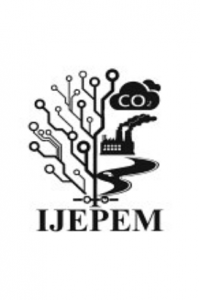New Design for Charging Section of Electrostatic Precipitators Using Thermocouple Principle for Air Pollution Control
New Design for Charging Section of Electrostatic Precipitators Using Thermocouple Principle for Air Pollution Control
Air pollution control, Electrostatic Precipitator, Thermocouple,
___
- [1] Adbara, I., Hassan, A.S., and Hassan, A.S. (2017) . Design and implementation of an electrostatic precipitator and its cleaning system for small scale combustion. Indo-Iranian Journal of Scientific Research. 1: 213-224.
- [2] Barnard, Ronald Derrick, and Vincent Cannella. (1974). Thermoelectricity in metals and alloys. Physics Today 27: 52.
- [3] Moorthy, C. G., Sankar, G. U., & RajKumar, G. (2017). A Design for Charging Section of Electrostatic Precipitators by Applying a Law for Electric Field Waves. Imperial Journal of Interdisciplinary Research, 3(6).
- [4] Udhaya Sankar, G., Ganesa Moorthy, C., & RajKumar, G. (2018). Synthesizing graphene from waste mosquito repellent graphite rod by using electrochemical exfoliation for battery/supercapacitor applications. Energy Sources, Part A: Recovery, Utilization, and Environmental Effects, 1-6.
- [5] Udhaya Sankar, G., Ganesa Moorthy, C., & RajKumar, G. (2018). A suggestion for a good anode material synthesized and characterized. Discov, 54, 249-253.
- [6] Udhaya Sankar, G., Ganesa Moorthy, C., & RajKumar, G. (2018). Smart Storage Systems for Electric Vehicles–A Review. Smart Science, 1-15.
- [7] Ayturan, Y , Ayturan, Z , Altun, H . (2018). Air Pollution Modelling with Deep Learning: A Review. International Journal of Environmental Pollution and Environmental Modelling, 1 (3), 58-62. (http://dergipark.gov.tr/ijepem/issue/39774/471354 )
- [8] Moorthy, C. G., Sankar, G. U., & Rajkumar, G. (2017). Two Expressions for Electrostatic Forces and For Magnetic Forces to Classify Electromagnetic Waves. Imperial Journal of Interdisciplinary Research, 3(10).
- [9] Moorthy, C. G., Sankar, G. U., & RajKumar, G. (2018). Temperature of Black Holes and Minimum Wavelength of Radio Waves.
- [10] Sankar, G. U. (2007). A Survey on Wavelength Based Application of Ultraviolet LED. computing.
- [11] Moorthy, C. G., Sankar, G. U., & RajKumar, G. (2017). LIGOs Detected Magnetic Field Waves; not Gravitational Waves. Imperial Journal of Interdisciplinary Research, 3(8).
- [12] Vallikkodi, M., Sankar, G. U., & Vishnukumar, P. (2017). An Innovative Interpretation for Parallel Universe. Imperial Journal of Interdisciplinary Research, 3(5).
- [13] Moorthy, C. G., Sankar, G. U., & Rajkumar, G. (2016). Rotating Bodies Do Have Magnetic Field.
- [14] UdhayaSankar, G., GanesaMoorthy, C., & RajKumar, G. (2016). Global Magnetic Field Strengths of Planets From A Formula.
- [15] Moorthy, C. G., Sankar, G. U., & Kumar, G. (2017). What Is The Polarity Of An Electromagnetic Wave?. Indian J. Sci. Res, 13(1), 255-256.
- [16] Ayturan, Y. A., Öztürk, A., & Ayturan, Z. C. (2017). Modelling of PM10 Pollution in Karatay District of Konya with Artificial Neural Networks. Journal of International Environmental Application and Science, 12(3), 256-263.
- Yayın Aralığı: Yılda 2 Sayı
- Başlangıç: 2018
- Yayıncı: Yasin Akın AYTURAN
Evaluation of the Levels of Haloacetic acids in Gharbiya Governorate, Egypt
Utilization of Wastewater Treatment Sludge and Agricultural Wastes Together as A Compost
Ummugulsum GUNAY, Sukru DURSUN
Some Systematics and Ecological Data for True Bugs (Hemiptera) in Some Habitats in Fieri
Eltjon HALİMİ, Anila PAPARİSTO, Alba MARA
Ganesa Moorthy C., Rajkumar G., Sekar S.
Utilization of Rice Straw as a Low-Cost Natural By-Product in Agriculture
